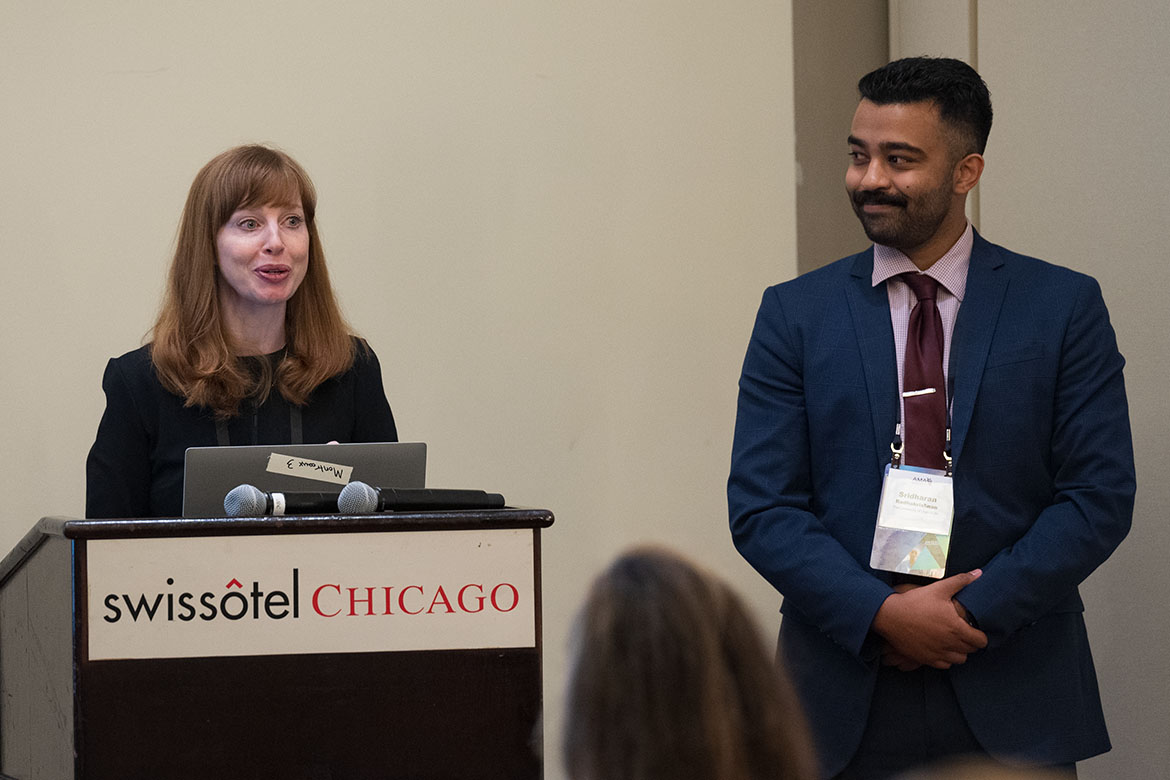All medical students, regardless of the physician specialty they ultimately pursue, will spend time working in the operating room during a surgical clerkship rotation. For many, the rotation is a source of consternation given a lack of familiarity with this environment.
To orient medical students to the space, University of Utah School of Medicine surgery clerkship Director Kirstyn E. Brownson and Surgery Interest Group co-presidents created an education tool to help students understand the choreography of the operating room.
“Surgery is high stakes and fast-paced,” said Kirstyn E. Brownson, MD, an assistant professor in the University of Utah’s department of surgery and a fellowship-trained surgical breast oncologist. “There isn’t a lot of time for letting students know what is going to come next. And there are things that you cannot predict that happen during a case. But orienting students to the different acts of this ballet and to the entire cast can be really helpful. It removes some of the mystery about the OR. We hope it will enable students to engage with the team more easily and divert their energy from worrying to learning.”
For students preparing to begin their surgery rotation, Dr. Brownson and fourth-year University of Utah medical student Sri Radhakrishnan—who presented on their educational tool at the AMA ChangeMedEd® 2023 conference in Chicago—offered a few tips that can help make the experience a successful one.
Mind your hands
Keeping the surgical environment sterile is paramount. While students do have an awareness of it, they may tend to let it slip their mind during early days on their surgical rotation.
“Prior to my clinical rotations, when scrubbing in, everyone rigorously washes their hands, you dry them in a specific way, and then you have to be gowned and gloved by an expert in the field,” said Radhakrishnan, who has applied to general surgery residency programs.
“From that point, you can’t let your hands drop below your belly button,” he said. “I didn’t know any of that the first time I scrubbed into an operating room, so immediately after this intense process, I dropped my hands. I had to start all over again.”
The AMA Succeeding in Medical School series offers tips and other guidance on a wide range of critical topics, including preparing for USMLE exams, navigating clinical rotations, publishing scientific research, and maintaining optimal health and wellness.
Introduce yourself
The choreography of the operating room can be complex. A good starting place is to simply know who everyone in the room is and what they do.
“Knowing the names and roles of everyone in the room helps with communication, especially during critical moments in the case” said Dr. Brownson, an AMA member. “There is also more buy in from members of the team after introductions. This is important! Everyone is a valuable member of the team.”
Don’t be a bystander
Filling the gaps and doing the little things goes a long way with members of the surgical team.
“The way students can ingratiate themselves into the team is to get involved,” Dr. Brownson said. “Rather than standing in the corner of the room and observing, help move the patient onto the OR table, help the anesthesiologist and the nurse. Get warm blankets for the patient when they go into a cold operating room. Doing this as a student demonstrates that you are part of the team.”
Read the room
A major concern medical students express prior to a surgical rotation is that their actions in the OR could hinder patient care.
“The presence of students in the OR augments patient care, especially when students see themselves as members of the surgical team,” Dr. Brownson said.
Radhakrishnan adds that students should monitor the room for certain cues. For instance, if the music in the OR is turned off, a case may be reaching a critical point.
“A big skill is to simply read the room,” he said. “Really, it’s a life skill. I’ve tried to read the room well, and sometimes you fail. Just keep in mind there are times during an operative case when you can be asking questions, but if you look around the room and realize everyone is quiet and focused, maybe you should hold off on asking an anatomical question.”
Maintain focus on the patient
Most medical students won’t pursue a surgical specialty, but the value of a surgical rotation isn’t all in the procedures. The experience also gives students another venue to practice their patient-care skills.
“The focus of the surgical rotation for third-year medical students is not to learn surgical procedures,” Dr. Brownson said. “That might shock a lot of students to hear. Students are learning about the medical care of surgical patients, indications for surgery, anatomy, pathophysiology. Additionally, on a surgery rotation, the lessons that students are exposed to while working together as part of a team are invaluable. Learning how to communicate with patients and families during a stressful time and how to deliver difficult news are important student experiences.”





